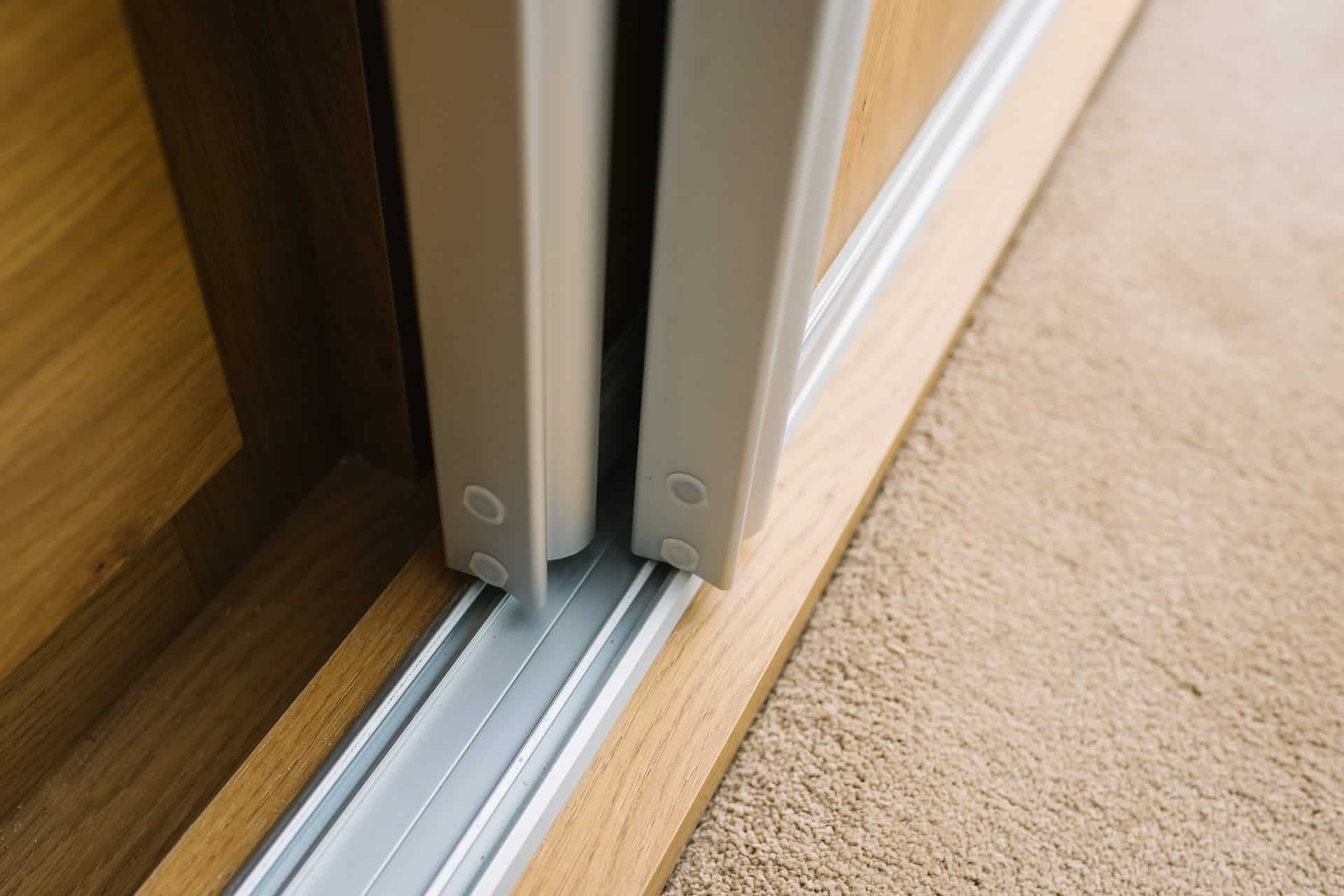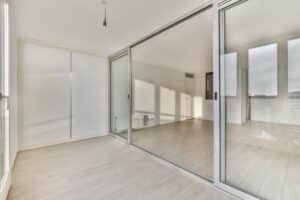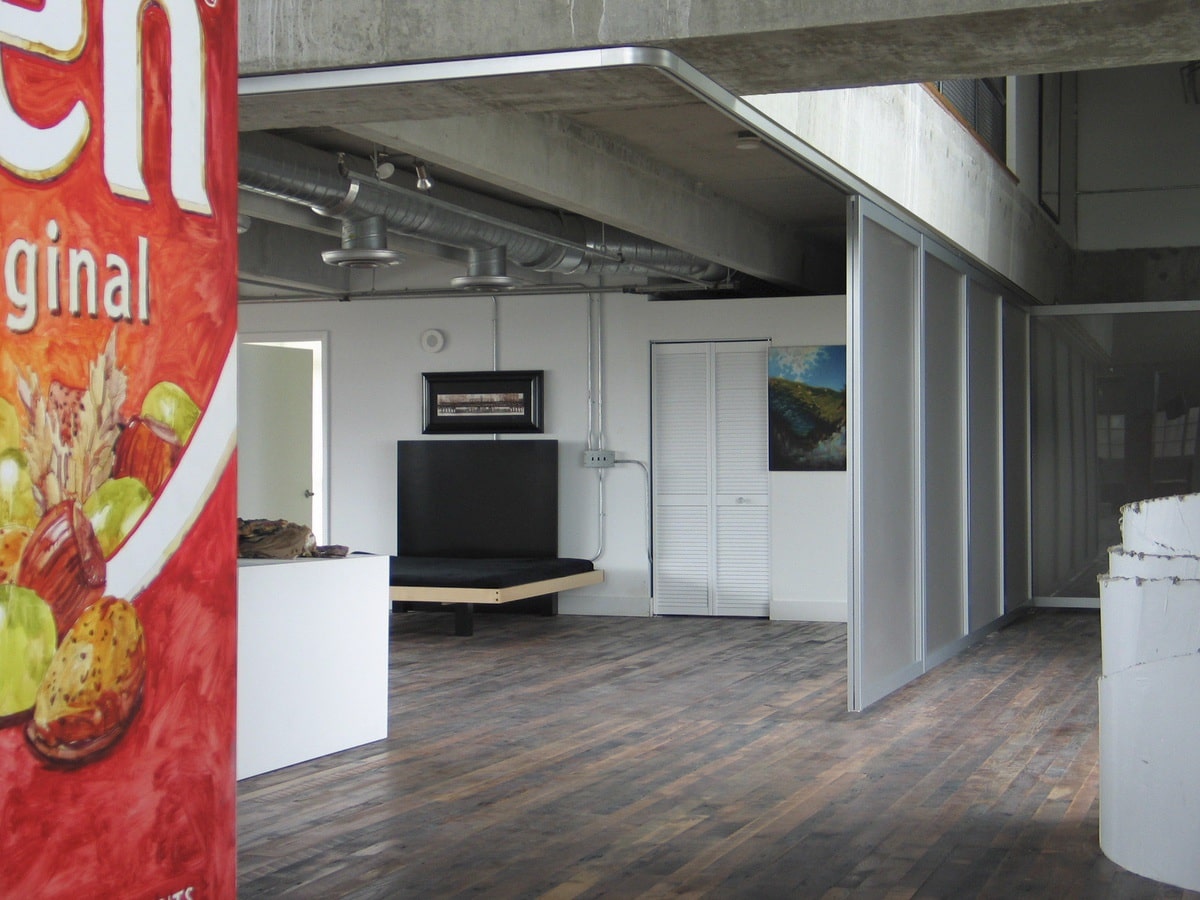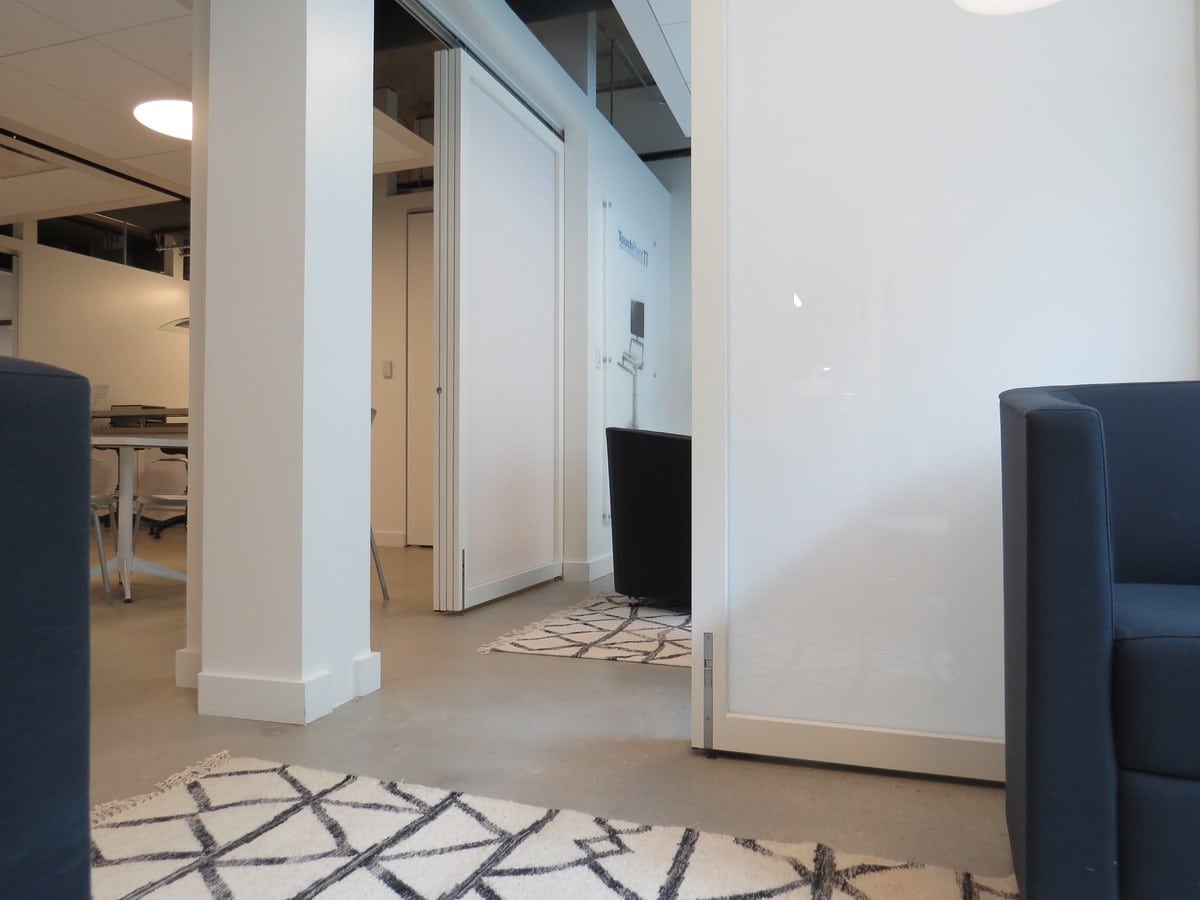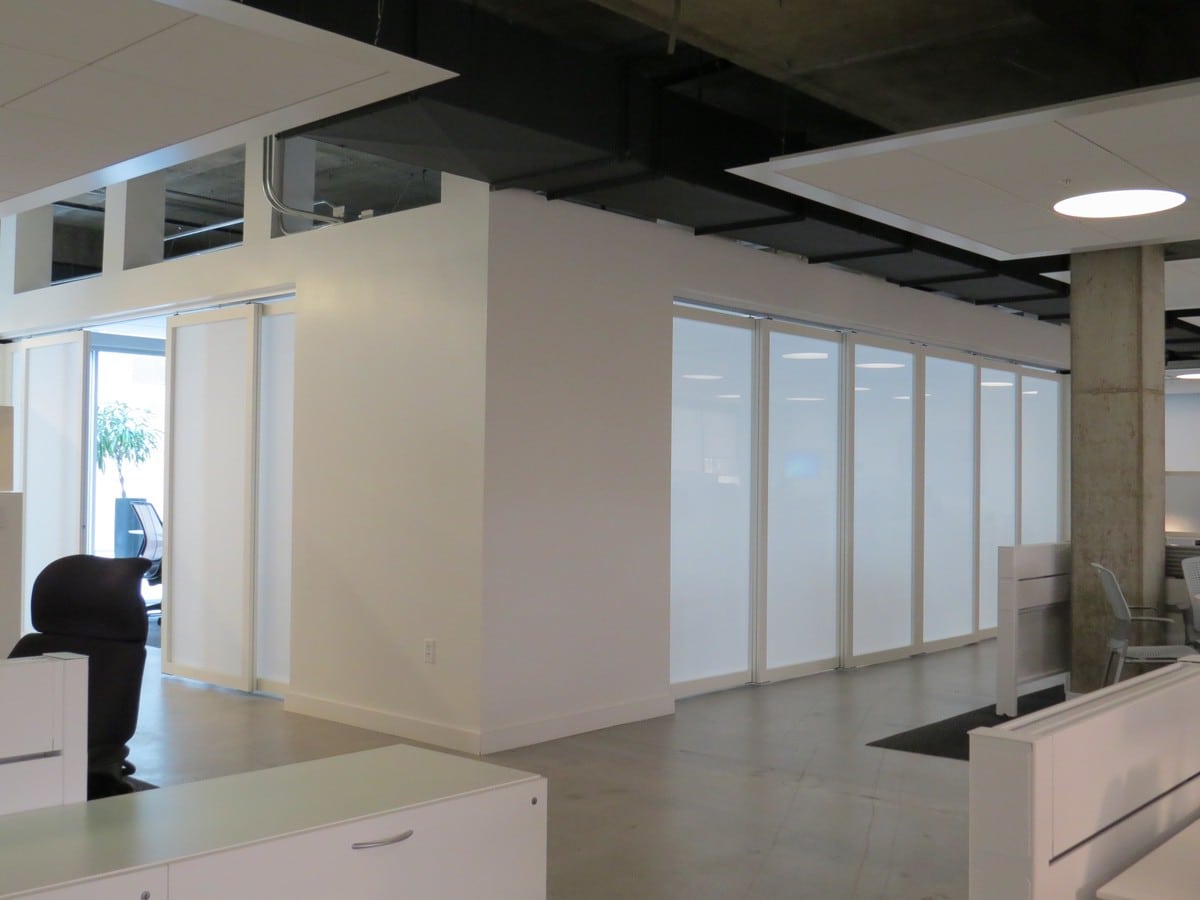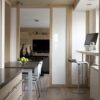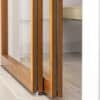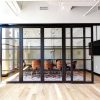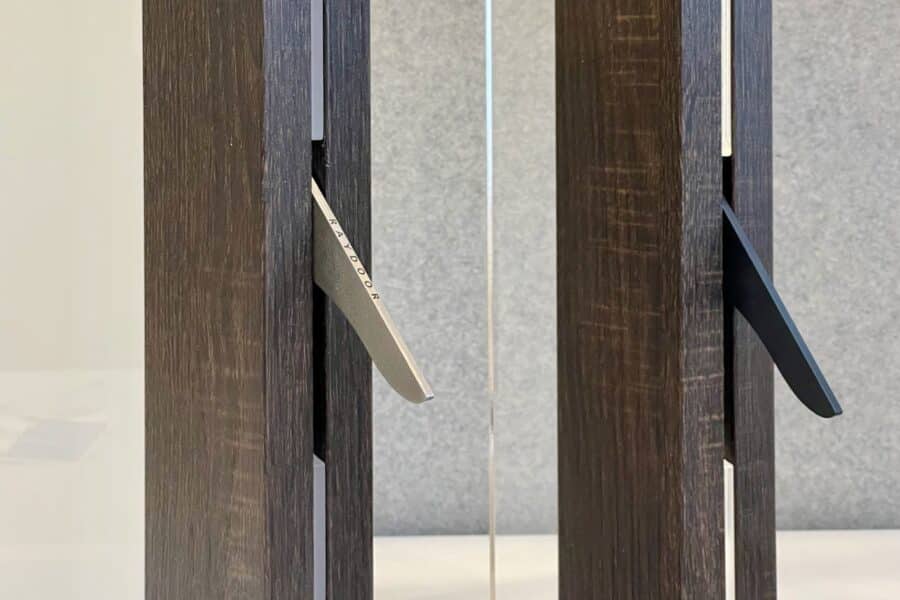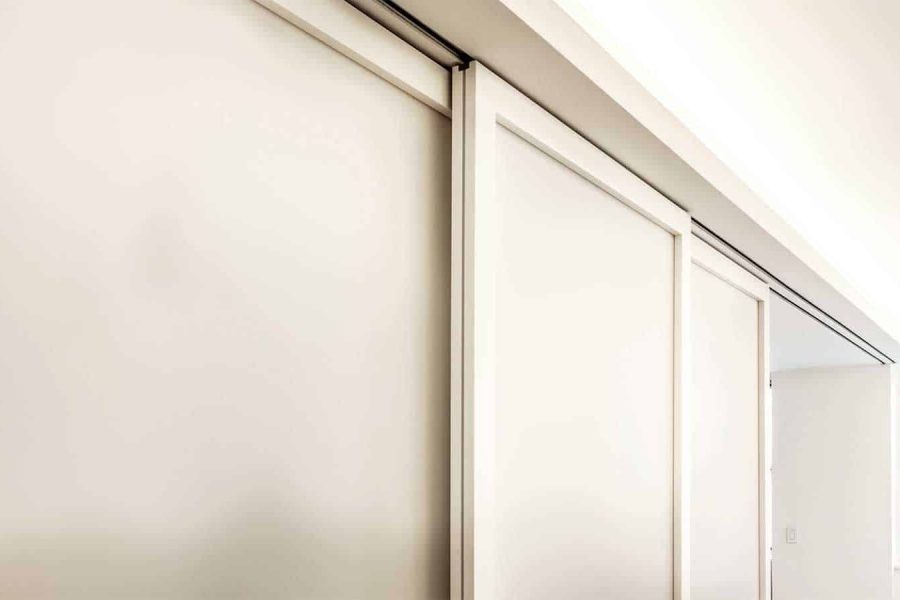Summary
- Floor tracks are common in sliding door systems—but often come with downsides like dust buildup and trip hazards.
- Raydoor designs sliding doors and walls that don’t require floor tracks. This offers a visually cleaner and more practical way to divide spaces.
- Features like concealed guides, flush bolts, and telescoping hardware provide stability without the need for visible floor hardware. These are included in Raydoor’s sliding systems if you need them—not add-ons you have to worry about later.
- Raydoor’s systems are available in both single and multi-panel configurations, making them ideal for restaurants, offices, and hotel suites.
- With trackless design as the default, Raydoor can help you preserve the full beauty of an open space while giving you the ability to partition it for any purpose when you need it.
If you’ve ever opened a sliding partition and been greeted by a groove in the floor, you’ve seen the quiet compromise that most systems ask you to make. It’s subtle, but ever-present: a physical reminder that the room is usually something else—that it’s meant to be divided.
If you want to really open up a room for large groups, activities, or sheer ambience, it’s nice to have a way to do it that doesn’t leave those distracting lines. A way that makes the whole room feel just as beautiful as each of the partitioned sections.
At Raydoor, we think a space should feel like whatever you need it to be in the moment. Not divided. Not temporary. Just seamless. That’s why we design state-of-the-art trackless sliding door and wall systems—so you can divide your space when you want, and erase the boundaries when you don’t.
Hear It from an Expert
We’ve broken down what you need to know about our trackless sliding systems below—but you can also watch this video from our founder, Luke Siegel, where he explains the difference they can make in his own words:
Get a no-obligation quote for your sliding door system here—or keep reading to learn more about tracked vs. trackless systems.
Why Floor Tracks Are Common—But Not Necessarily Better
If you’re like most people, you probably assume that most sliding door systems—especially commercial ones—default to floor tracks because they provide added stability. But outside of certain use cases, that’s actually not the case.
In certain contexts, floor tracks can be useful. They’re good for keeping heavy panels in line, especially when the door system is expected to do double duty as a wall, a whiteboard, or something more utilitarian. That’s fine in places like classrooms or high-traffic boardrooms—which is why we can offer our door systems with tracks and guides as well.
But aside from those cases we just mentioned, you can almost always get the kind of functionality you want from our sliding door systems without needing to install a track that alters the look and feel of your flooring. On top of that, many doors with floor tracks introduce other issues that can make them more trouble than you bargained for.
The Hidden Downsides of Floor Tracks
Floor tracks come with tradeoffs beyond the way they impact your space’s appearance. They can also change things like the maintenance, safety, and value of your space. Consider the following:
- They collect dust and debris, which means they often need frequent maintenance
- They introduce a tripping hazard—especially in public or multi-use spaces
- Sliding heavy doors on tracks can leave visual scars on the floor that never fully disappear if the doors and tracks are removed in the future
So while floor tracks can be useful in some situations, we don’t believe they should be the default option for sliding systems. There are cleaner, simpler, and more beautiful ways to divide a space.
Raydoor’s Take: Clean Floors & Seamless Transitions
At Raydoor, we’ve spent years developing a patented system that delivers comparable stability to a floor track—but without the need for a track itself. Our panels are crafted using lightweight but structurally sound acrylic glazing inserts sandwiched between two frames. This process essentially turns each insert into a structural element, which creates additional possibilities for securing it when you slide your panel or panels open.
Different Ways to Slide Open a Door—No Tracks Required
Here are a few of the different options Raydoor systems can use to guide and secure sliding door systems:
- Concealed guides that are just a few inches long, installed near the threshold to help the door glide into place without needing a full track. These guides slot naturally into the recess between the frames on each panel, beneath the edge of the insert.
- Flush bolts with dust-proof floor strikes that keep doors stable when stationary—without being visible or intrusive. Instead of installing an entire track along your floor, the strike sits near the threshold and is barely visible.
Connecting Multiple Sliding Panels
These options aren’t just for single sliding doors or walls, either—they’re available to help you create sliding systems with as many configurations as your space requires. Here are some other features we automatically incorporate in our sliding wall systems to help these more complex setups operate more efficiently and elegantly:
- Overlapping frames that visually slim down when the doors are closed, creating a cleaner, brighter appearance.
- Patented telescoping hardware that securely connects multi-panel wall systems so each panel follows the next when pulled.
These features are thoughtfully built into our systems so you don’t have to worry about adding them. You just get a clean, functional solution by default.
A Better Floor Means a Better Room
When the floor is clean and uninterrupted, it changes how people experience the space. The room feels whole. It doesn’t betray its alternate functions. When the panels are open, it feels like it was always meant to be that way.
That makes a difference for restaurants hosting private events, offices toggling between open collaboration and closed meetings, or hotel suites designed to transform from shared to secluded.
And when a floor track is absolutely necessary, Raydoor offers that too. But we always start with the question: what’s the most beautiful, functional way to divide this space—and can we do it without the track?
Learn More: How to Divide a Room without Sacrificing Flexibility
Let Your Floor Breathe with Raydoor
The ability to divide large spaces into smaller ones as needed is increasingly vital for many businesses—and a growing residential trend as well, with more people working from home. But the way you do it shouldn’t force you to compromise the beauty of a big open space when you want to enjoy one.
At Raydoor, we believe design should elevate a space—not restrict it. That’s why our floor-track-free systems allow you to define and redefine rooms without mechanical clutter or unnecessary boundaries.
Contact us today to see how we can help you create a cleaner, more flexible layout from the ground up.
